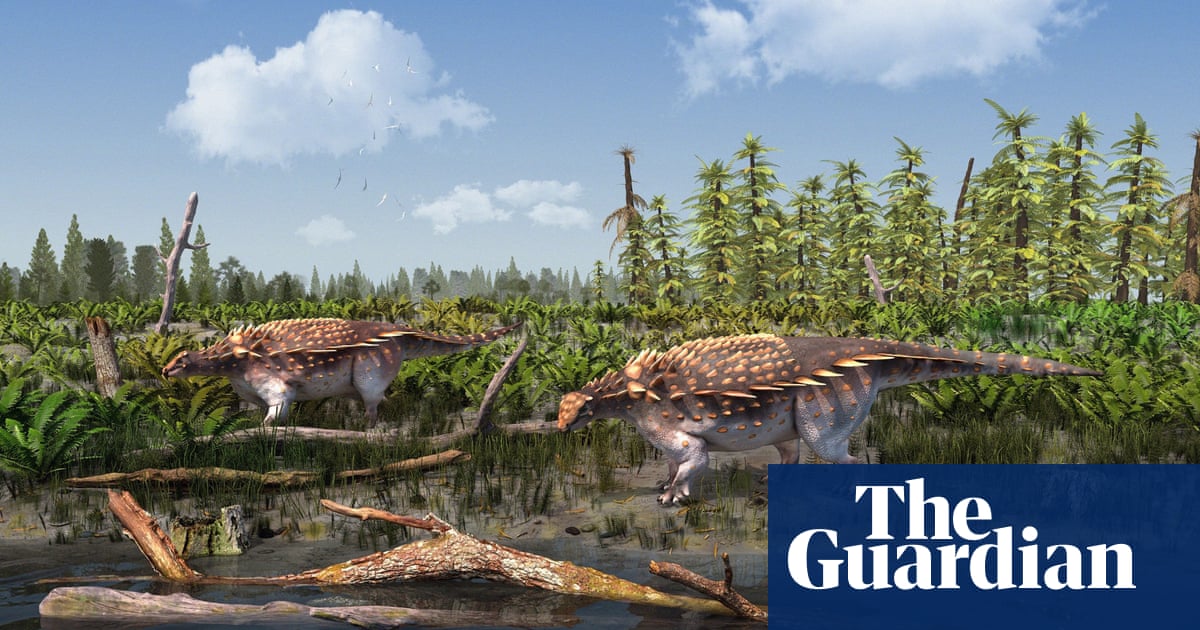
Fossilised remains from the Isle of Wight have been identified as a new dinosaur species that has been named after a palaeontologist at the London’s Natural History Museum.
It belongs to a group of plant-eating dinosaurs known as ankylosaurs that was found in the 1980s on the island’s Wessex formation – a geological feature dating to between 145m and 66m years ago.
After analysis revealed it was a new species it was named Vectipelta barretti – after Prof Paul Barrett, the head of fossil vertebrates at the Natural History Museum (NHM).
It is the second armoured dinosaur to be found on the island, the first one being Polacanthus foxii, which was unearthed in 1865. V barretti differs from its predecessor P foxii in its neck and back bones.
Analysis also shows both species have different pelvic structures and V barretti has a more blade-like, spiked armour.
Barrett said: “I’m flattered and absolutely delighted to have been recognised in this way, not least as the first paper I ever wrote was also on an armoured dinosaur in the NHM collections. I’m sure that any physical resemblance is purely accidental.”
The findings are described in the Journal of Systematic Palaeontology.
The co-author, Dr Susannah Maidment, a senior researcher at the NHM, said: “Paul has been a really important and significant mentor, supervisor, colleague and friend to myself and several of the other authors on the paper, and we wanted to thank him and recognise his huge contributions to dinosaur palaeontology.”
Speaking to BBC Radio 4’s Today programme, Maidment said when the remains were discovered in the 1980s they were thought to be from the same species as the 19th-century find on the island. But, she added, “we’ve now discovered it’s rather different from the Polacanthus and it’s a new species. It’s got differences in its vertebrae, its pelvis and some of its armour is different as well. So we are quite confident it’s a completely different animal.”
Although both ankylosaurs originated from the same island, the researchers found they were not closely related.
In fact, they said, V barretti is most closely related to some Chinese ankylosaurs, suggesting these dinosaurs moved freely from Asia to Europe in the Early Cretaceous period, up to 145m years ago).
Stuart Pond, a researcher at the NHM department of Earth sciences, said: “This is an important specimen because it sheds light on ankylosaur diversity within the Wessex formation and early cretaceous England.”
The researchers said rocks from the Wessex formation and the Isle of Wight were “hugely important” to understanding more about how dinosaurs became extinct.












